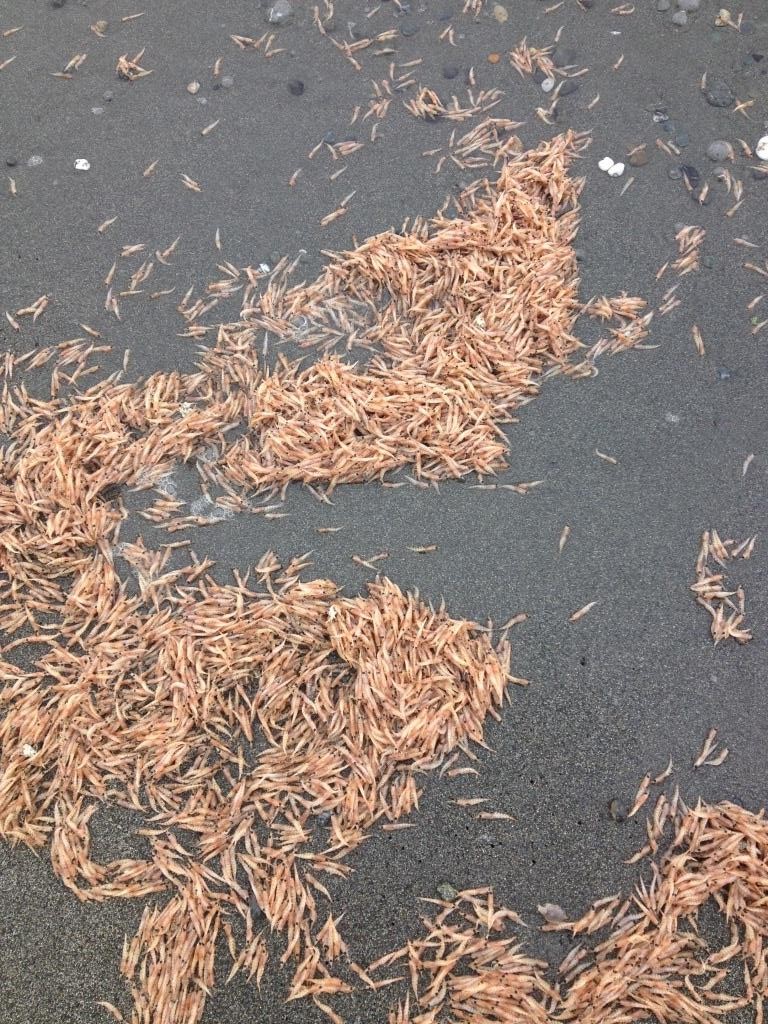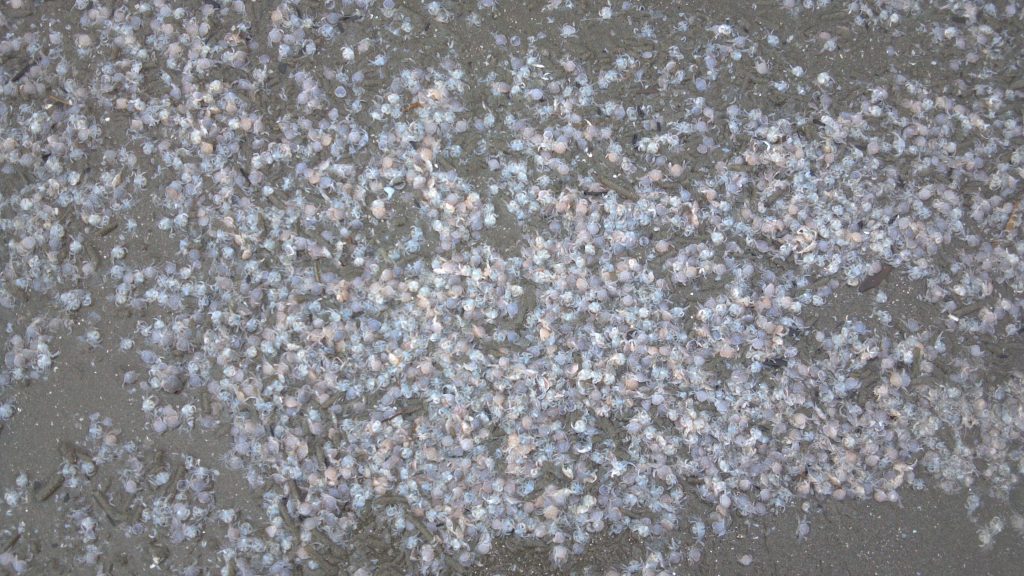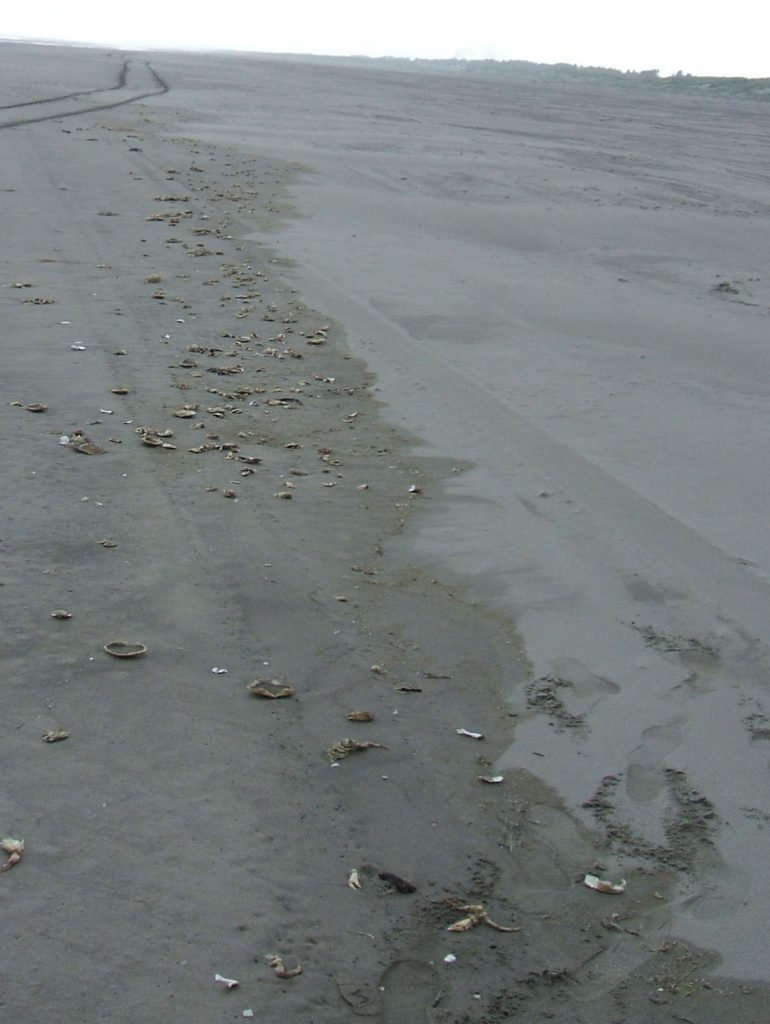Since late June, Oregon and California COASSTers have been keeping their eyes out for large numbers of krill coming shore. This puzzling phenomenon, mentioned in a previous post, has been happening on beaches from Bodega Bay, California to Newport, Oregon, and scientists are still unsure about the cause. Speculated causes include a krill pathogen, or swarms of krill being carried off by the wind when they come to the surface to mate or to get more oxygen (possible hypoxia event?).
The first report of krill came on May 11, 2013 from Oregon Mile 99, Dave and Diane’s beach. Additional COASSTers from Agate Beach (Wendy), Oregon South Mile 101 (Doug and Mariann), Seven Devils (Karen), Bullards Beach (Rick), Ma-le’l (Sara and Peter), and Mad River Park North (Cindy) did not note krill during their late June COASST surveys.





